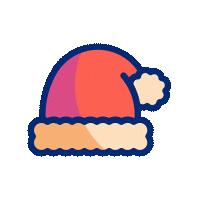Natural Fibers: Cellulosic Fibers — Cotton, Linen, Flax, Jute etc. etc.; Protein Fibers — Wool, other Animal Hairs, Silk
Regenerated Fibers\Filaments: Cellulosic’s — Regular Viscose, High Tenacit Viscose, Chemically modified Viscose (Cellulose acetates etc. etc.); Protein Fibers — Milk Cassin (Lanitial), Soya bean (Azlon) etc. etc. Regular Synthetic Fibers\Filaments: Polyamides — Nylon 6, Nylon 66, Nylon 4 etc. etc.; Polyesters — Terylene, Dacaron etc. etc.; Acrylics, Mod-acrylics, Aramides, Polyethylene/Polyolefin, Polypropylene etc. etc. Special Synthetic Fibers\Filaments: Super strong polymers — Kevlar, B Fibers, Carbon Fibers; Temperature/Flame Resistant Polymers — Neomex etc. etc.; Elastomers — Lycra etc. etc; Mineral Fibers — Asbestos, Glass, Carbon; Other special purpose fibers. Testing and Quality Control of Fibers\Filaments — Properties, Testers/Test methods and
Quality standards for fibers and filaments
Raw Material — need to mix cottons, the processing of blends; The Short Staple (Cotton) – Processes — Blow room, Card, Draw frame, Comber (optional), a) Roving-frame, Ring-frame b) Rotor frame and other Open End processed, c) Compact spinning, and d) other modern spinning systems Long staple processes — Processing of Flax, Linen, Jute and other long staple cellulosic materials; Processing of wools — Worsted and Woolen spinning Testing and Quality Control of Yarns — Properties, Testers/Test methods and Quality standards for yarns; Tests for specific end uses
Preparatory to Weaving — Winding, Warping and Sizeing processes Shuttle Weaving — Hand looms, Pedal looms, Power looms, Automatic looms; Primary Secondary and tertiary motions; tappet dobby and jacquard shedding; special motions of
Automatic loom Shuttleless Weaving — different weft insertion systems, rapier, projectile, air jet, water jet; modifications in preparatory processes for shuttleless weaving Knitting — Warp and weft knitting-theory and practice, Ticot and Rachell Systems- Theory and Practice, Testing of knitted fabrics — properties-test methods, end uses of knitted fabrics Non Woven Fabric Preparation — different methods of producing non-woven fabrics, Properties of non-woven fabrics, Testing of non-woven fabrics, end uses of nonwoven fabrics Testing and Quality Control of Fabrics — Properties, Testers/Test methods and Quality standards for gray fabrics; Tests for specific end uses.
Desizeing — different methods Scouring — processes for cotton wool and silk (ceresin removal)
Mercerising (fabrics with cotton only) — Slack and taut processes Bleaching — Different bleaching agents and processes
Dyeing — Classes of dyes, linking dye classes to different fibers, dyeing processes Printing — Manual — Stamp and Flat screen processes; Automatic — engraved roller and screen roller systems, digital printing Testing and Quality Control of Wet processing — Process Parameters and Properties, Testers/Test methods and Quality standards for processes and finished fabrics; Tests for specific end uses
Pre spinning Processes — Preparation of Polymer/Dope, Dope dyeing Spinning Systems — Linking yarn types and spinning processes; Wet spinning, Melt spinning, dry spinning — processes and parameters; Multistage (POY) process Post Spinning Processes — Different types of texturistion, stress relaxation.
Statistical description of test data — measures of central tendency and dispersion; Objective tests of significance like “t”, “F”, Chi square and the Analysis of Variance; Tests for analysis of subjective data; Correlation and Regression; Multivariate
statistical tools. Fiber Calculations — Use of Linear programming (on k, u, s, m & f) to optimize cotton mixing, draft calculations and settings Yarn Calculations — interpretation of Uster spectrograms; and Instron and Tensorapid charts; Fabric Calculations — Sizeing calculations; Computation of fabric parameters from test results; computation of production figures. Wet Processing Computation — Numerical color systems; Calculation of color recipes (CIE method) and the adjustment of color recipes from trial dyeing; Computation of material/Liquor ratios for multiple solutions.
Machinery calculations — Power storage and utilization calculations for textile machines; Gear and Draft calculations for textile spinning machines; Statics and kinetics of various sub systems of spinning preparatory and weaving machinery; Balancing of rotating machine components; Cam design.
Bulk Properties of Textile materials — Length, breath and width / diameter, density, moisture regain, thermal properties, electro-magnetic properties, tensile properties, bending and buckling modulus, frictional behavior, torsion properties, abrasion
resistance and optical properties Fine Structure — The theory of the structure of fibers at the crystal lattice level (fringed micelle theory), amorphous and crystalline regions, degree of order, and orientation etc. etc.; Explanation of bulk properties in terms of the fine structure properties and chemical properties.

Hi!
